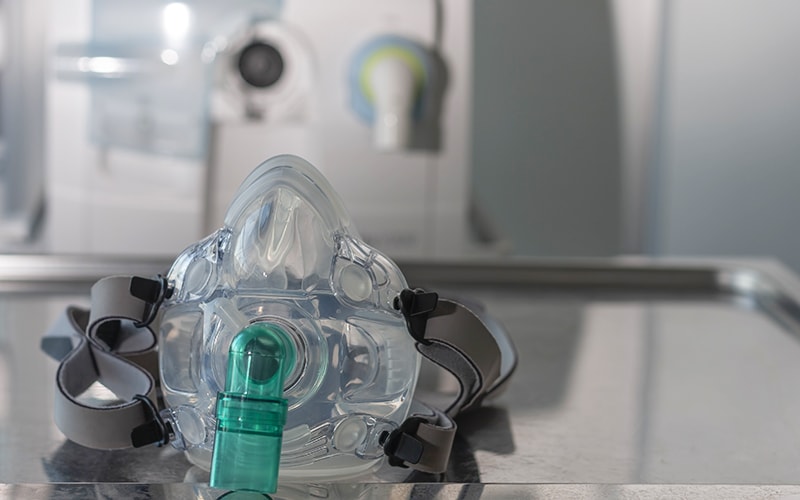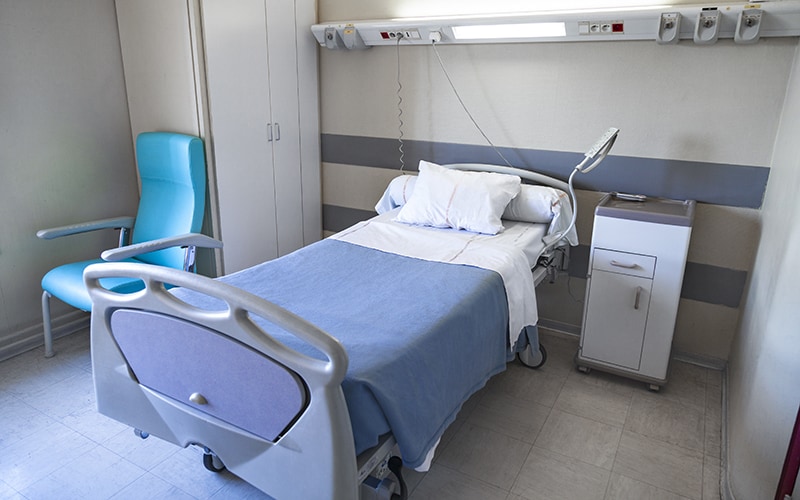COVID-19 Data from Selected Hospitals
The National Hospital Care Survey (NHCS) collects data on patient care in hospital-based settings to describe patterns of health care delivery and utilization in the United States. Settings currently include inpatient and emergency departments (ED). Additionally, the NHCS contributes data that may inform public health emergencies as the survey is designed to capture emerging diseases and viruses that require hospitalizations, including COVID-19 encounters. The 2020 – 2023 NHCS are not yet fully operational so it is important to note that these data are not nationally representative.
The data are from 26 hospitals submitting inpatient and 26 hospitals submitting ED Uniform Bill (UB)-04 administrative claims from March 18, 2020–December 26, 2023. Even though the data are not nationally representative, they can provide insight on the impact of COVID-19 on various types of hospitals throughout the country. This information is not available in other hospital reporting systems. The NHCS data from these hospitals can show results by a combination of indicators related to COVID-19, such as length of inpatient stay, in-hospital mortality, comorbidities, and intubation or ventilator use. NHCS data allow for reporting on patient conditions and treatments within the hospital over time.
Tabulated data show the percentage of confirmed, suspected COVID-19 and non-COVID-19 encounters over time, among all ED or inpatient encounters in the reporting hospitals. Data are presented for each setting (inpatient and ED) and for each week, by age and sex.
Tabulated data show the percentage of confirmed COVID-19 encounters, by hospital urban-rural location. Hospital location is grouped into three categories: large and fringe metropolitan area, medium and small metropolitan area, and rural area. Data are presented for each setting (inpatient and ED) and for each week.
Tabulated data show the percentage of all hospitals encounters with a COVID-19 screening conducted in the hospital. Data are presented for each setting (inpatient and ED) and for each week, by age and sex. Additionally, the percentage of positive and negative screenings among total COVID-19 screenings are shown for each week, by age and sex.
Tabulated data show the percentage of confirmed COVID-19 inpatient discharges that involved intubation or ventilator use at any time during hospitalization. Weekly data are presented by age and sex.
Tabulated data show the percentage of confirmed COVID-19 encounters in which an in-hospital death occurred. Data are presented for each setting (inpatient and ED) and for each week, by age and sex. Additionally, data show the percentage of in-hospital deaths among confirmed COVID-19 discharges, with and without intubation or ventilator use. Lastly, data presented show the average length of stay among COVID-19 inpatient discharges by intubation or ventilator use and in-hospital mortality status.
Tabulated data show the percentage of hospital confirmed COVID-19 encounters with the co-occurrence of other respiratory illnesses. Data are presented for each setting (inpatient and ED) and for each week, by age and sex.
The figure below shows the number of hospital visits in the inpatient and EDs for the 23 hospitals that submitted inpatient data and the 23 hospitals that submitted ED data from March 18, 2020–September 26, 2023.
- 4,627,735 ED encounters and 1,564,423 inpatient discharges.
Technical Notes
- Data are not nationally representative.
- Less than 1% of all encounters were excluded due to missing sex, age, or a diagnosis.
- 8.5% of inpatient discharges were for newborns and are excluded (International Classification of Diseases, 10th Revision, Clinical Modification [ICD–10-CM: Z38]).
The data provided are from small and large hospitals across the country in urban and rural locations. Information on the characteristics of the hospitals that provided UB–04 administrative claims data are below.
The data used in the figures are considered preliminary and have not undergone final edits. There will be updates every two months to the presented data to include data. The results may change in monthly updates and with the release of the final 2023 NHCS data file, which will also not be nationally representative.
There is a higher percentage of general acute hospitals that are included in this summary than the number of general acute hospitals in the NHCS hospital frame file. There is also a much larger percentage of hospitals with 500 or more beds and hospitals in urban areas included in these results than found on the NHCS hospital frame file.
| 2020-2023 NHCS reporting eligible hospitals | 2020 NHCS frame | ||
|---|---|---|---|
| Type of service | General acute care | 96.2 | 71.5 |
| Children’s | 3.8 | 2.9 | |
| Psychiatric | 0.0 | 13.0 | |
| Rehabilitation or long term acute | 0.0 | 12.5 | |
| Bed size | Less than 100 | 19.2 | 57.5 |
| 100 to 299 | 30.8 | 29.7 | |
| 300 to 499 | 19.2 | 9.3 | |
| 500 or more | 30.8 | 3.6 | |
| Region | Northeast | 26.9 | 13.6 |
| South | 30.8 | 40.7 | |
| Midwest | 34.6 | 26.9 | |
| West | 7.7 | 18.8 | |
| Urban-rural status | Metropolitan statistical area (MSA) with a population of 1 million or more people | 30.8 | 39.5 |
| MSA with a population less than 1 million people | 46.2 | 31.5 | |
| Micropolitan (urban clusters with a population of at least 10,000 but less than 50,000) and noncore (most rural) areas | 23.1 | 29.0 | |
Source: CDC/NCHS, National Hospital Care Survey, 2020-2023
NHCS is designed to collect electronic (UB–04 administrative claims or electronic health records) data for all encounters in a calendar year. From 2020-2022, the NHCS nationally representative sample included 608 hospitals. In 2023, the NHCS sample was 601 hospitals. Eligible hospitals are in the 50 states and the District of Columbia and include non-institutional and non-federal hospitals with six or more staffed inpatient beds. Information collected includes diagnoses, procedures, demographics, discharge status, and patient identifiers (e.g., name and Social Security number). Hospitals are currently being received into the survey.
Provided on this site are data on hospital care and utilization for COVID-19 for a nonrandom subset of NHCS hospitals, including the occurrence of COVID-19 hospital encounters over time; hospital encounters by urban-rural status; COVID-19 screenings; the use of intubation and ventilators; in-hospital mortality; and the co-occurrence of respiratory illness. The figures and tables presented represent different groups depending on the measure of interest.
For more details on NHCS, visit https://www.cdc.gov/nchs/nhcs/index.htm.





